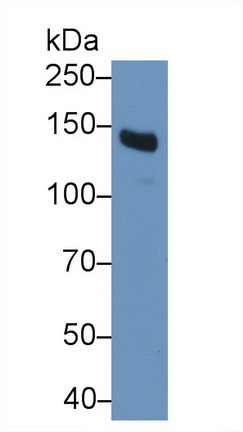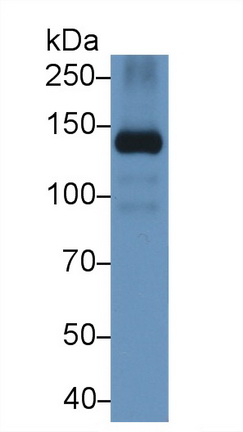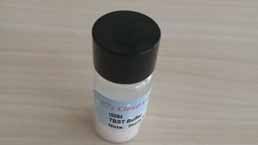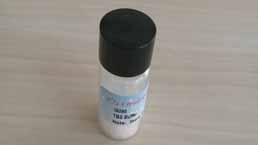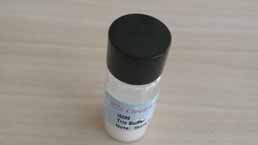Polyclonal Antibody to D-Dimer (D2D) 

D 2 Dimer
Overview
Properties
- Product No.PAA506Mi08
- Organism SpeciesHomo sapiens (Human) Same name, Different species.
- ApplicationsWB; IHC; ICC; IP.
If the antibody is used in flow cytometry, please check FCM antibodies.
Research use only - DownloadInstruction Manual
- CategoryHematologyCardiovascular biology
- SourcePolyclonal antibody preparation, Host Rabbit
- Ig Type IgG, Potency n/a
- PurificationAntigen-specific affinity chromatography followed by Protein A affinity chromatography
- LabelNone
- Immunogen n/a
- Buffer Formulation0.01M PBS, pH7.4, containing 0.05% Proclin-300, 50% glycerol.
- TraitsLiquid, Concentration 0.39mg/ml
Sign into your account
Share a new citation as an author
Upload your experimental result
Review

Contact us
Please fill in the blank.
Specifity
The antibody is a rabbit polyclonal antibody raised against D2D. It has been selected for its ability to recognize D2D in immunohistochemical staining and western blotting.
Usage
Western blotting: 0.01-2µg/mL;
Immunohistochemistry: 5-20µg/mL;
Immunocytochemistry: 5-20µg/mL;
Optimal working dilutions must be determined by end user.
Storage
Store at 4°C for frequent use. Stored at -20°C in a manual defrost freezer for two year without detectable loss of activity. Avoid repeated freeze-thaw cycles.
Stability
The thermal stability is described by the loss rate. The loss rate was determined by accelerated thermal degradation test, that is, incubate the protein at 37°C for 48h, and no obvious degradation and precipitation were observed. The loss rate is less than 5% within the expiration date under appropriate storage condition.
Organism Species More: Homo sapiens (Human), Rhesus monkey (Simian)Giveaways
Increment services
Citations
- Determinants of the thrombogenic potential of multiwalled carbon nanotubesScienceDirect: S0142961211004819
- Exogenous Activated Protein C Inhibits the Progression of Diabetic NephropathyPubmed: 22236035
- Protective Effect of Curcumin on Pulmonary and Cardiovascular Effects Induced by Repeated Exposure to Diesel Exhaust Particles in MicePlosOne: Source
- Clinical impact of factor V Leiden, prothrombin G20210A, and MTHFR C677T mutations among sickle cell disease patients of Central IndiaPubmed: 23992124
- Assessment of coagulopathy, endothelial injury, and inflammation after traumatic brain injury and hemorrhage in a porcine modelLww:Source
- Protein S exacerbates alcoholic hepatitis by stimulating liver natural killer T cellsPubmed:25399514
- Systemic and Flap Inflammatory Response Associates with Thrombosis in Flap Venous CrisisPubmed:25448261
- Impact of β-Adrenoceptor Blockade on Systemic Inflammation and Coagulation Disturbances in Rats with Acute Traumatic CoagulopathyPubmed:25676919
- Intraperitoneal administration of activated protein C prevents postsurgical adhesion band formation.PubMed: 25575539
- Procoagulant and Fibrinolytic Activity after Polytrauma in RatPubMed: 26632604
- Upregulation of canonical transient receptor potential channel in the pulmonary arterial smooth muscle of a chronic thromboembolic pulmonary hypertension rat modelPubMed: 26155749
- Trans‐fatty acid promotes thrombus formation in mice by aggravating antithrombogenic endothelial functions via Toll‐like receptorsPubMed: 25546502
- KLF2 and KLF4 control endothelial identity and vascular integrity.pubmed:28239661
- Activated protein C drives the hyperfibrinolysis of acute traumatic coagulopathypubmed:27841821
- Activated TAFI Promotes the Development of Chronic Thromboembolic Pulmonary Hypertension: A Possible Novel Therapeutic Targetpubmed:28289017
- Inhibition of Cell Apoptosis and Amelioration of Pulmonary Fibrosis by Thrombomodulinpubmed:28739343
- Low dose of alcohol attenuates pro-atherosclerotic activity of thrombin.pubmed:28923781
- Lactadherin Promotes Microvesicle Clearance to Prevent Coagulopathy and Improves Survival of Severe TBI Micepubmed:29162596
- Guided longer pulses from a diagnostic ultrasound and intraclot microbubble enhanced catheter-directed thrombolysis in vivo.pubmed:28417266
- Experimental Evaluation of a New Tissue Factor-Based Topical Hemostat (TT-173) for Treatment of Hepatic BleedingPubmed: 30380352
- The Inhibitory Effect of Protamine on Platelets is Attenuated by Heparin without Inducing Thrombocytopenia in RodentsPubmed: 31533230
- Complement factor D is linked to platelet activation in human and rodent sepsis34396466
- NLRP3 Inflammasome contributes to endotoxin-induced coagulationPubmed:35421682
- Construction of a rabbit model with vinorelbine administration via peripherally inserted central catheter and dynamic monitoring of changes in phlebitis and thrombosisPubmed:35126715





